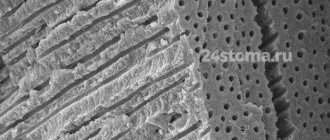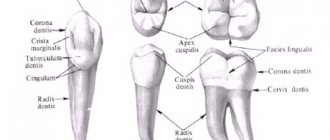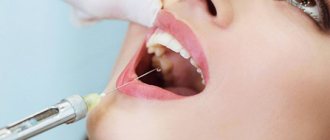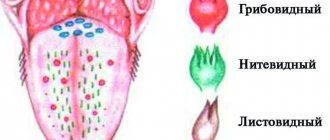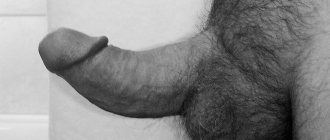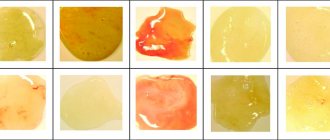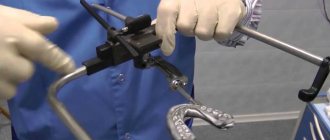Rozhkov I.A. Dental units “ANTOS” - a new model range of the “A” series are already in Russia!
Problems of “Clinical Gnathology”
Gnathology is the science of the interaction of all organs of the dentofacial system, including anatomy, physiology, and pathophysiology of this system, involving a comprehensive study, diagnosis and planning of treatment measures.
"Clinical Gnathology" implies an emphasis on the practical use of this science.
Over the past 20 years, there has been a technological breakthrough in domestic dentistry: new materials have appeared, and modern, high-quality, aesthetically pleasing dentures have begun to be used. Why is the number of patient complaints about dental care increasing and currently, according to forensic data, is one of the first places among complaints brought against doctors of various specialties?
We believe that one of the reasons for this situation is insufficient attention to the problems of Gnathology.
Based on clinical observations, back in the 80s we described numerous dental and neurological symptoms that arise as a result of diagnostic and treatment errors. The first works were published on the problems of “Clinical Gnathology”, on electromyography of masticatory muscles in normal and pathological conditions, on phonography and tomography (and later computed tomography) of the temporomandibular joint. Our use of intra- and extraoral recording of movements of the lower jaw improved the diagnosis of functional disorders and made it possible to imagine their pathogenesis.
For the diagnosis and design of dentures, we first mastered and used articulators in practice (1982-1983).
Unfortunately, in those years, new developments had difficulty making their way into practice. This was also facilitated by the fact that there was no Gnathology in dental training programs at universities. Textbooks still contain long-outdated materials on “Biomechanics of the masticatory apparatus.” There is no special textbook on “Clinical Gnathology”.
The domestic industry does not produce instruments and devices for studying the function of the dentofacial system or simulating the movements of the lower jaw.
In Europe and throughout the world, much attention is paid to the development of Gnathology. Dental companies produce numerous devices and articulators. All countries have books and teaching aids on this topic. Many educational institutions abroad have programs in Gnathology, designed for several years of study. They are implemented throughout the entire learning process or in special courses and departments.
Advanced courses in Gnathology are available in many European Universities. The best of them are considered to be the courses taught by professors A.Gutowski (Germany) and R.SIavicek (Austria).
At international exhibitions (Cologne) a variety of pantographs (mechanical and electronic), articulators of all types and for various purposes are constantly demonstrated.
Knowledge of “Clinical Gnathology” is necessary for a dentist of any profile:
— to assess occlusion in normal and pathological conditions;
— for the diagnosis and treatment of muscular-articular dysfunction, diseases of the temporomandibular joint, facial pain;
— to create stable central occlusion for all types of occlusal correction (orthopedic, orthodontic, orthognathic surgery);
— for planning functional occlusion in the manufacture of orthopedic structures;
— to assess the effect of occlusal trauma on the periodontium;
— for repositioning jaw fragments in accordance with correct occlusion;
— to determine the location and direction of the implant;
— when choosing a treatment method and determining a plan for medical interventions;
- to evaluate records of movements of the lower jaw and compare these records with other indicators of the functional analysis of the dentofacial system.
Several years ago, on the initiative of StAR, an educational and advisory and “Professor's Author's” clinic was organized, where we compiled a program for advanced training of doctors and dental technicians in “Clinical Gnathology” (headed by V.D. Wagner).
Classes at the organized training center aroused great interest among dentists. Doctors from many private clinics and offices, university teachers repeatedly attend these classes and use the acquired knowledge in practice.
We associate the further development of “Clinical Gnathology” with publications in the corresponding section of the “Maestro” magazine, as well as with the planned organization of the “Clinical Gnathology” section under the auspices of StAR. It is necessary to create “Clinical Gnathology” departments in universities and advanced training faculties for doctors.
An important matter is the introduction into the curriculum of dental departments and schools of the basics of “Clinical Gnathology”, a section on the peculiarities of working with articulators, on new methods of modeling the occlusal surface, setting teeth, etc.
In Russia and the CIS countries there are only a few specialists on this problem, and they interpret the same concepts and treatment methods differently, sometimes they do not have basic knowledge of Gnathology, patients receive conflicting advisory opinions, which is often the source of iatrogenic diseases.
Standards are required for “Clinical Gnathology” as a general dental discipline (such disciplines include, for example, anesthesiology, dental neurology, medical psychology, etc.). This means that a specialist dealing with the problems of “Clinical Gnathology” must have:
— dental unit, office;
— necessary equipment (face bows, articulator, pantograph, funciograph, etc.), materials (gypsum No. 3,4, special wax, molds for casting models), etc.;
— experience working with patients with occlusion disorders, temporomandibular joint disorders, bruxism, facial pain;
— document confirming completion of courses in Clinical Gnathology.
It is also advisable to create courses on “Clinical Gnathology”, for example, at the departments of general dental practice, where classes could be conducted with students, as well as train teachers in this discipline (personnel for personnel).
I urge the public to take part in creating a scenario for the formation of “Clinical Gnathology” as a general dental discipline.
Best regards, Prof. V.A. Khvatova
What does a gnathologist determine?
A person is often forced to consult a gnathologist due to various health disorders. Situations that a gnathologist dentist can help deal with most often relate to:
- Problems with the mandibular joint (displacement or dysfunction).
- The need to determine the basic gnathological parameters (determining the correct relationship of the jaws and their deviation from the central occlusion, determining the interalveolar height or the distance between the alveolar ridges of the upper and lower jaw).
- If it is necessary to restore the correct movements of the lower dentition in various directions (right, left, up and down) and recreate the correct canine and incisal separation.
- To recreate the anatomical features of the chewing surfaces of teeth for effective and gentle chewing in a number of pathologies (increased tooth wear, bruxism).
- If necessary, muscle relaxation therapy and the use of disconnecting mouthguards (“bite glasses”) or splints (splints or plates for fixation). This is due to patient complaints of contraction of the muscles (masticatory or facial) or jaw while eating or yawning.
Most of the above problems or pathologies can only be identified and eliminated by a gnathologist.
Chewing load
The TMJ has three sections that perceive chewing load:
- Articular tubercle - it is located on the temporal bone and is well responsive to pressure when chewing.
- Articular disc. In the central part, to which most of the chewing pressure is transmitted, the disc has no vessels.
- Cartilage tissue that covers the surfaces of joints.
The main direction of pressure when chewing is forward and upward.
With normal muscle condition and coordinated work, we get smooth movement in the joint without overload. To have an idea of muscle function and joint condition, additional research is necessary. The most informative are rheoartography, tomography and magnetic resonance imaging.
If the joint works normally and smoothly, then most of the load during chewing is transferred to the periodontium. It is he who gives the central nervous system feedback on the strength of muscle work.
Despite the fact that most information comes from the lateral chewing teeth and their periodontium, it is not necessary that any disturbances in this department will lead to pathological conditions of the joint and muscles.
A very important factor is the psychological state of the patient.
An unstable psychological state reduces tissue resistance and can lead to:
- Compression (squeezing)
- Distractions (stretching)
Compression leads to a decrease in the distance inside the joint and traumatization of the articular disc and cartilaginous surfaces, but the articular capsule and ligaments of the joint do not experience increased stress.
With distraction, on the contrary, the joint space becomes wider, and the capsule and ligaments of the joint are stretched.
Compression
The causes of compression are the loss of chewing teeth, pathological abrasion or disruption of closure after orthopedic operations on chewing teeth.
In this case, the basics of clinical gnathology suggest correcting compression using various types of onlays on the lateral teeth.
At the beginning, with compression, the patient may notice incomplete opening of the mouth and clicking when opening the mouth wide, and over time this can lead to premature wear of the articular disc and inflammation of the cartilaginous surfaces of the joint and, ultimately, pain with any movement.
Components of the dental system and what they are needed for
Teeth can be roughly divided into front and side teeth. The front teeth are responsible for biting, and the lateral teeth are equipped with special tubercles and are responsible for grinding food during chewing.
The teeth are covered with enamel - this is the hardest tissue of the body and it is this that protects the teeth under stress.
The pressure from chewing is transferred to the periodontium - these are the tissues surrounding the tooth and providing it with an elastic connection to the jaw bone. The tooth itself is attached to the bone with the help of a ligamentous apparatus, and it is due to this that each tooth has physiological mobility - due to this, the tooth is more stable and less susceptible to overload.
Also, the periodontium is filled with blood and lymphatic vessels and nerves, thanks to which it controls the degree of chewing pressure and can “program” the position of the lower jaw by regulating this pressure.
With short-term overloads, the periodontium, as a rule, does not undergo changes. But if overload affects it for a long time, this can lead to unpleasant consequences.
Basic treatment methods
Treatment by a gnathologist is aimed at eliminating the underlying cause of symptoms and improving the patient’s quality of life. If necessary, treatment of concomitant diseases is carried out by appropriate specialists. For example, for osteochondrosis of the cervical spine, massage and therapeutic exercises have a good effect, and for lesions of the trigeminal nerve, drug treatment prescribed by a neurologist.
An important place in treatment by a gnathologist is occupied by the use of special splints, mouth guards, and trainers, which help relieve muscle tension and form the correct relationship between the different anatomical structures of the dental system. In some cases, only surgical intervention can significantly help the patient, which will effectively correct existing abnormalities.
Information about who a gnathologist is and what gnathology is helps patients understand which specialist they can turn to for help when a regular consultation with a dentist does not bring the desired results. If your attending physician refers you to a gnathologist, then be sure to undergo an examination by this specialist, strictly follow all the recommendations, and soon you will notice a significant improvement in your condition.
Sincerely, Levin D.V., chief physician
How is an appointment with a doctor?
An appointment with a gnathologist is not much different from an appointment with other specialists. First of all, the doctor asks the patient in detail about his complaints and finds out the history of the disease. Particular attention is paid to the presence of other chronic diseases in the patient. Since dysfunction of the dental system is closely related to the nervous system, the presence of injuries, and dental diseases, the doctor dwells on these aspects in more detail.
It is mandatory to examine the oral cavity and evaluate the condition of the facial part of the skull and spine. To make an accurate diagnosis, the specialist prescribes additional instrumental and laboratory research methods that will help carry out differential diagnosis and identify the main cause of the patient’s complaints.
Sometimes it may take some time to make a final diagnosis, and the patient will not limit himself to one visit to the gnathologist. However, the use of modern technologies greatly simplifies the diagnostic process. After the cause of the disorders has been found, the doctor selects a set of the most effective treatment measures for the patient.
Prices
It is impossible to calculate in advance the cost of a gnathologist’s work. It all depends on the pathology that he reveals during the examination. The approximate cost of treatment by a gnathologist, associated with the restoration of normal functioning of the dental system, ranges from 10,000 rubles. It will cost more for a specialist to treat TMJ dysfunction, which is important for effective and competent prosthetics.
A specialist gnathologist is able to improve the results of any type of orthodontic treatment. This is possible by obtaining a complete picture of the patient’s teeth and jaws, which is important for giving the dentures maximum anatomical and functional identity of the “native” teeth.
Sources used:
- “Removable dentures: a textbook” (Mironova M.L.)
- International Academy of Gnathology
- “Orthopedic dentistry. Textbook" (Abolmasov N.G.)
What techniques do you use to eliminate TMJ dysfunction?
In addition to special equipment, mouth guards and trainers help relieve tension and restore muscle function. That is why specialists prescribe them to patients before or after the installation of orthopedic structures. In addition, trainers and mouthguards also allow you to optimize and shorten the process of orthodontic treatment, especially when it comes to children. Previously, it was believed that a child with a narrow jaw could not avoid crowded teeth. Modern experts have refuted this statement and proved that jaws can “adjust” to any size of teeth, provided that nothing interferes with their growth. However, improper functioning of the muscles can stop the development of the jaws, and they will have to be expanded with the help of braces or complex treatment. A gnathologist helps you tone your muscles in a timely manner and avoid the appearance of serious curvatures. And this applies not only to children, but also to adults, with the only difference being that for the latter, the process of achieving the desired result will take a little longer.
Another way to restore proper muscle function is myogymnastics, a special program that stimulates the formation of a correct bite and its correction, preventing relapses after orthodontic treatment. The specialist will prescribe which exercises you will perform.
